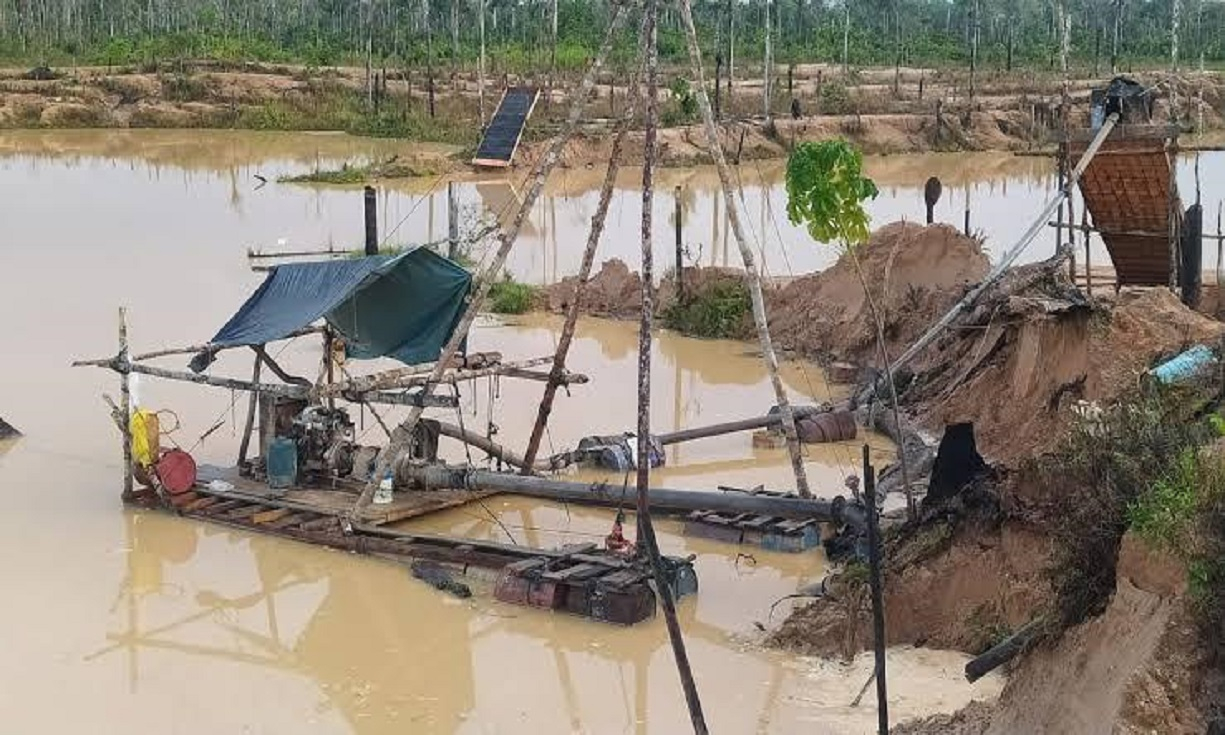
Informal mining produces 39.3% of the total gold production in Peru each year. This represents a total of 2 million 207 thousand ounces of the precious metal, which generates an economic movement of four billion dollars a year.
This study was carried out by a consulting firm V & C on behalf of the National Society of Mining, Petroleum and Energy (SNMPE).
During the mining convention Perumin 36the general manager of Summa Gold Corporation, Jaime Polar Paredes, confirmed that a large part of the gold production in the country is extracted illegally. Illegal production enters Bolivia, under the modality of smuggling. This explains why said country has increased its exports of this precious metal by 43%, which is not in relation to its formal production.
The areas with the greatest risk for the informal mining: Condorcanqui, Ayabaca and San Ignacio in the Amazonin addition to the border provinces located in Loreto, as well as Atalaya, Puerto Inca and Oxapampa (Central Jungle), Nazca, Palpa, Camaná and Caravelí (Middle South), Madre de Dios, Puno; Pataz, Sánchez Carrión, Otuzco, Santiago de Chuco, Cajabamba and San Marcos (Northern mining belt).
Alternatives
Polar maintains that there are strategies that can be applied to eradicate informality in the sector. Polar told La República that the Summa Gold company was directly threatened by this problem, because the land of the deposit was invaded by 5,000 illegal minerss, who were not even registered in Reinfo. This mine is located in the province of Sánchez Carrión, in the region of Freedom.
The model they applied to evict the illegal was to incorporate a good part of them. They hire them as formal workers. The other part of his strategy was to implement a system so that all mining contractors and service providers to the mine are made up of small companies in the area and the region.
The system generated a large demand for labor and by converting them into suppliers, they necessarily had to formalize themselves. “Over time, they have realized that formality is much more advantageous”Polar said.
According to the mining businessman, those incorporated helped evict the miners illegal immigrants, who were largely foreigners. “Not having a place within that formality, they have gone to their places of origin. With those who remained we have continued working,” he said.
The problem of mining that is not formalized is widespread throughout the country. In Arequipa, the conflict is concentrated in the provinces of Caravelí, Condesuyos and Camaná. In La Libertad, the Poderosa mining company operates, whose operation is also threatened by informal miners.
The problem has escalated so much that last August, the aforementioned company reported to the Securities Market Company as an important fact “the serious situation of insecurity and danger in the district of Pataz.” They reported that “the extreme violence with which the Criminal organizations of illegal mining and gangs criminals called “parkers”continues to increase.
The manager of Summa Gold, Jaime Polar, He said that in the case of his company, when their mine was occupied by illegals, they discovered that even children were working inside the mines. The incident was reported, but it was a liberated area, where the authorities practically did not enter.
Polar noted that another policy they use is not to buy anything that comes from illegal or informal sources. “I know that other operations have a policy of buying production from illegal miners. “We do not buy a single gram of gold, we believe it is a perverse incentive,” he declared.
Source: Larepublica
Alia is a professional author and journalist, working at 247 news agency. She writes on various topics from economy news to general interest pieces, providing readers with relevant and informative content. With years of experience, she brings a unique perspective and in-depth analysis to her work.












